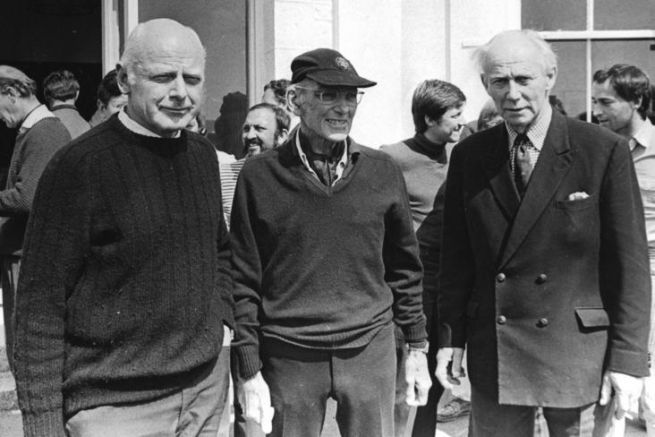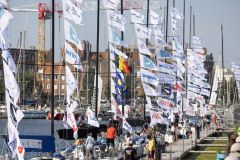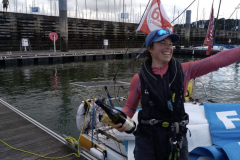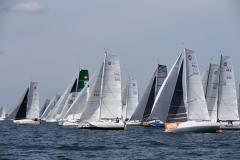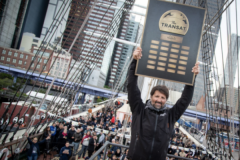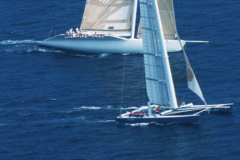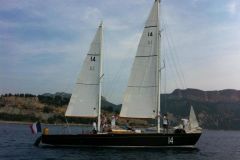Offshore racing has its ups and downs, moments of dream and moments of drama. The English Transat (OSTAR), the mythical crossing of the Atlantic Ocean, is no exception to this tradition. By setting the sails of the competitors on the shores of the old and new worlds, she takes with her dreams and hopes as well as disillusions and despair.
1960s, the youth years
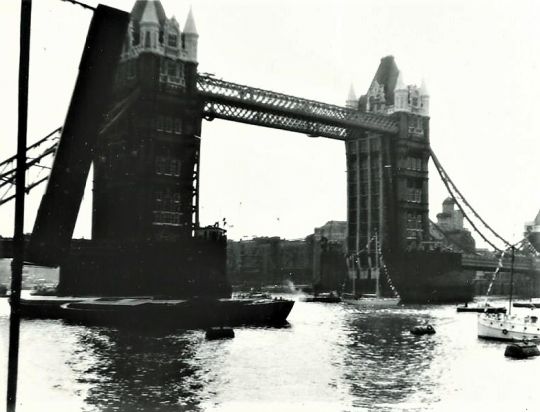
Launched in 1960, the Observer Single-handed Trans-Atlantic Race, in other words the OSTAR has 5 competitors for this edition. These skippers set off from Plymouth (Great Britain) to New York (USA). This is the only edition that will have had the Big Apple as its finish line, a port that will be reached by Jean Lacombe, a French competitor, who will be the last in 74 days. It is therefore more than a month after Sir Francis Chichester reached the American coast in victory after 40 days, 12 hours and 30 minutes of ocean crossing.
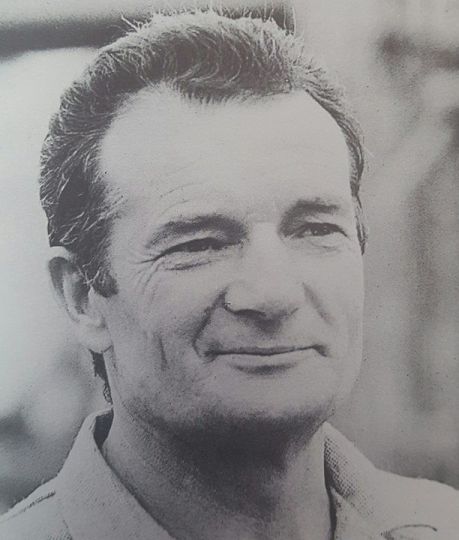
The 1964 edition will be the one that shapes the Tabarly legend. The Frenchman shattered the Chichester record by crossing the Atlantic in 27 days, 3 hours and 56 minutes aboard Pen Duick II. The story goes that the sailor had no consciousness of having won the race when he arrived in Newport. A feat that could hide another, it was in autopilot damage after 8 days of sailing that the Nantes native made the crossing.
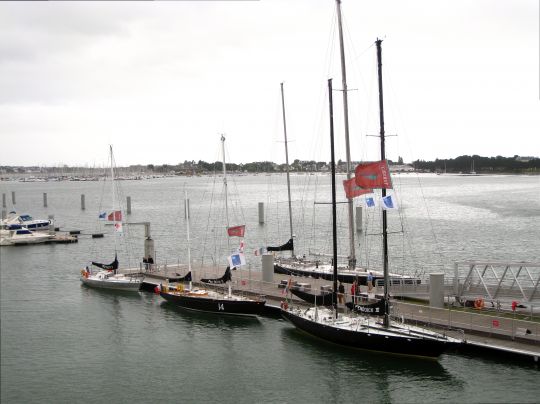
In 1968, weather routing made a brief appearance and was banned at the end of the race. Tabarly was unable to properly prepare the trimaran Pen Duick IV and gave up taking the start in winds of over 60 knots. Etic Willis, a competitor subject to his very gracious majesty, fell ill during the crossing and lost consciousness. Rescued by rescue helicopters from the Apollo programme, he will be transported and hospitalised in a state of semi-consciousness.
1970, The years of risk-taking
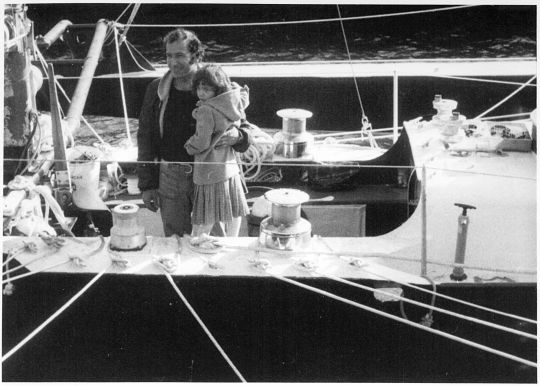
The 1972 edition of the race will put the French in the spotlight. Of the 55 competitors entered, 12 came from France. The crossing will be won by Alain Colas, at the helm of Pen Duick IV, in 20 days, 13 hours and 15 minutes. A symbolic victory also for Marie-Claude Fauroux, who will represent the first woman to cross the Atlantic single-handed. Jean Lacome's record will also be shattered by Peter Crowther, who will make the longest crossing in history in 88 days.
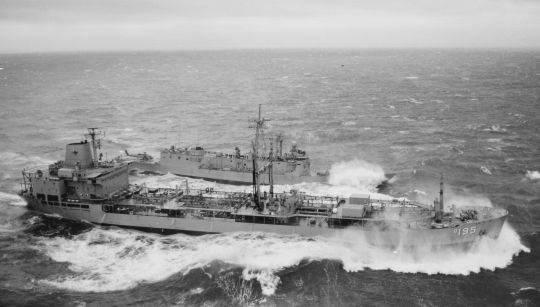
If Tabarly won the 1976 edition, the memory of this race is very tragic. Tony Bullimore saw his boat go up in flames as he was rescued by the frigate HMS Adelaide. Mike Flanagan, another Englishman, went overboard Galloping Gael and disappeared at sea. Finally, Mike McMullen disappears with his body and belongings at the command of Three Cheers. The only ray of sunshine in the greyness of this race was the unofficial participation of David Sandeman, only 17 years and 176 days old and not the 18 years old required to be entered. He will become the youngest sailor to have crossed the Atlantic, but out of the race.
1980, the mature years
In 1980, things became formalized. Cooled down by the 76 edition, the organisers limited the boat's size (56 feet maximum) and the number of competitors (110 maximum). As OSTAR entered adulthood, safety became a concern. This edition is won by Phil Weld in 17 days, 23 hours and 12 minutes. For the first time in history, the boats are tracked in real time thanks to the presence on board of ARGOS locator beacons.
Yvon Fauconnier won the next edition in 1984. Not by having achieved the best race time, but thanks to a time bonus he obtained. This by saving Philippe Jeantot whose Crédit Agricole boat capsized in the middle of the Atlantic. The stopwatch had given Philippe Poupon as the winner of the race in 16 days, 11 hours and 55 minutes, but the rules will be right for this victory. It was a quasi-French edition, as 80% of the competitors on the finish line came from France.

In 10 days, 9 hours and 15 minutes, Philippe Poupon won the 1988 edition on board Fleury Michon. The boats became computers and the skippers became engineers. For the first time in the Atlantic race, the competitors talk about their encounters with cetaceans. This was the case for Mike Birch, who saw his trimaran FujiColor damaged in a collision. Worse still, it was surrounded by 50 to 60 whales for nearly 3 days that the Briton David Sellings was attacked. He will barely have enough time to grab a few personal belongings before abandoning his sinking boat.
1990, modern times
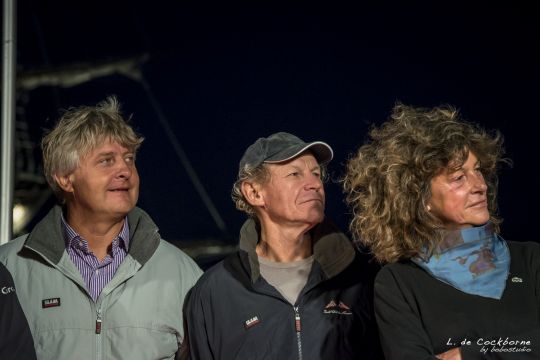
Loïck Peyron was a favourite to enter the 1992 race, a race he won in 11 days, 1 hour and 35 minutes. He was much luckier, or more daring, than his rivals. Yvan Bourgnon, leader, breaks his mainsail track. Florence Arthaud capsizes off Newfoundland and Philippe Poupon encounters a daggerboard problem.
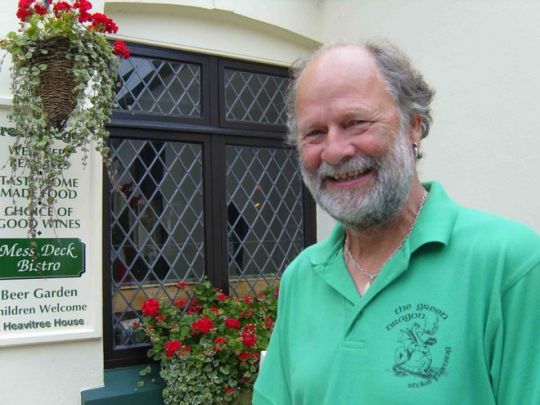
In 1996, Loïck Peyron won the race again, improving his 1992 record by about a day. He crossed the Atlantic in 10 days, 10 hours and 5 minutes, close to Poupon's record in 1988. Victim of a waterway, Peter Crowther abandons Galway Blazer and triggers his distress beacon on June 24th. He is saved.
2000, the incredible years
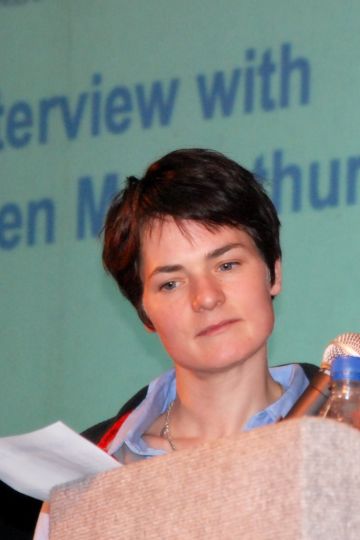
To mark the new millennium, Ellen MacArthur, a talented sailor just 23 years old, impressed the whole fleet with her nerve and generosity. She swallowed a 75 mile lead over the whole fleet on a poker game, a lead that she will maintain throughout the race. The race was finally won by Francis Joyon after 9 days, 23 hours and 21 minutes of battles between Thomas Coville, Michel Desjoyeaux, Yves Parlier, Mike Golding, Roland Jourdain and Dominique Wavre.
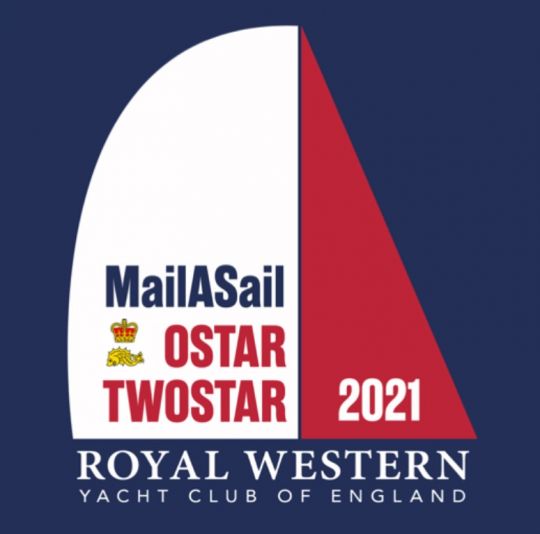
A year of transformation, 2004 will mark the schism of the race into two entities, THE TRANSAT for professional sailors and the traditional OSTAR for others. Won by Michel Desjoyaux in 8 days, 8 hours and 29 minutes, the first edition reserved for professional skippers has had its share of rescues. Jean-Pierre Dick's boat dismasted in 50 knots of wind. The same goes for Vincent Riou on PRB. Bernard Stamm lost the keel of his IMOCA 60 Cheminées Poujoulat-Armor Lux and capsized. Finally, a notable change, the race is due to finish in Boston, in the United States.
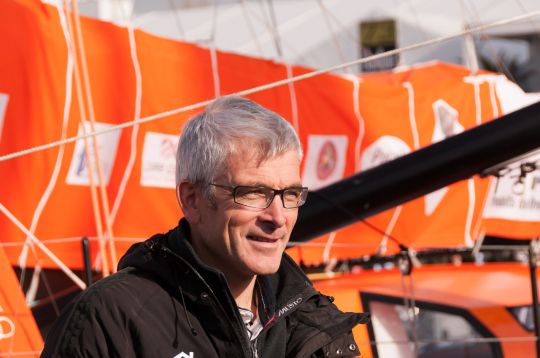
Unhappy to win the race in 12 days 8 hours and 45 minutes, Loïck Peyron will save the life of Vincent Riou who gives up after hitting a basking shark. As if that wasn't enough, this 2008 race will be the fastest in history. Peyron will win in 12 days, 11 hours and 45 minutes (real time), four weeks less than Sir Francis Chichester in 1960.
2010, years of refounding
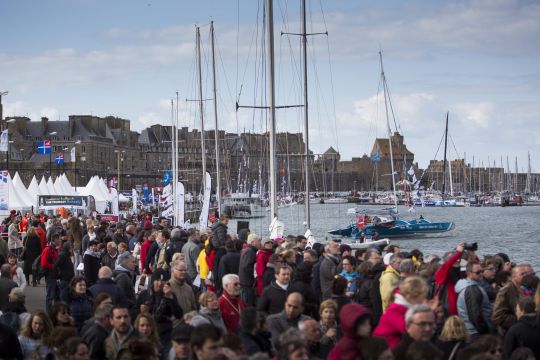
A year of rebirth after 8 years without competition, 2016 will mark the return to more traditional basics. François Gabart won the race after a warm-up in front of Saint-Malo, arriving in New York in 8 days, 8 hours and 54 minutes. The foils arrive and Armel Le Cléac'h imposes his domination on the archimedians such as PRB de Riou. At the helm of Pen Duick II, Eric Tabarly's former boat, Loïck Peyron paid a vibrant tribute to the late sailor. The headwinds will have taken the edge off his motivation and the tribute will end with him retiring after 13 days at sea.
2020s, years of consciousness?
What does the next edition have in store for us? It was initially planned to be run in 2020 between Brest in France and Charleston in the USA. The international crisis due to the covid and the uncertainties generated will have postponed this competition for 4 years. There is no doubt that these 4 additional years will allow the competitors to sharpen their foilers a little more and prepare their boats even more for this event.

